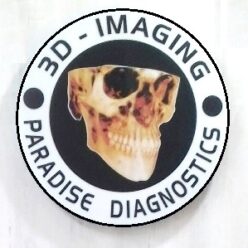Cephalographic imaging, specifically cephalometry, refers to a diagnostic imaging technique used in dentistry and orthodontics to obtain two-dimensional X-ray images of the head and skull in a standardized lateral (side) view. These images, known as cephalograms or lateral cephalometric radiographs, provide valuable information about the facial and cranial structures, particularly in relation to orthodontic and dental treatment planning.
Here are key points about cephalographic imaging:
Orthodontic Assessment:
Cephalometric imaging is commonly used in orthodontics to evaluate the relationship between the teeth, jaws, and facial structures. Orthodontists use these images to assess growth patterns, tooth eruption, and overall facial harmony.
Treatment Planning:
The information obtained from cephalograms helps orthodontists and dentists in formulating treatment plans for various orthodontic interventions, such as braces, aligners, and other corrective measures.
Craniofacial Anatomy:
Cephalometric images provide a detailed view of the craniofacial anatomy, including the position of the teeth, the shape and size of the jawbones, the location of the temporomandibular joints (TMJ), and the soft tissues of the face.
Angular and Linear Measurements:
Orthodontic specialists use cephalometric analysis to measure specific angles and distances related to dental and skeletal structures. These measurements aid in diagnosing orthodontic problems and planning appropriate interventions.
Growth Assessment:
Cephalometric imaging is valuable for assessing the growth of facial structures over time, which is particularly important in pediatric orthodontics.
Airway Analysis:
Some cephalometric analyses include assessments of the upper airway, helping to identify potential issues related to breathing and sleep-disordered breathing.
Temporomandibular Joint (TMJ) Evaluation:
Cephalograms may capture images of the temporomandibular joints, allowing for assessment of their position, shape, and any abnormalities that may be associated with temporomandibular joint disorders (TMD).
Profile Evaluation:
Cephalometric images provide a lateral profile view of the patient’s face, allowing for a comprehensive evaluation of the facial aesthetics and proportions.
It’s important to note that cephalography involves exposure to ionizing radiation, and the use of this imaging technique is typically justified based on the specific diagnostic needs of the patient. As technology has advanced, other imaging modalities, such as Cone Beam Computed Tomography (CBCT), may also be used to supplement or replace cephalometric imaging in certain cases, providing more detailed three-dimensional information.
